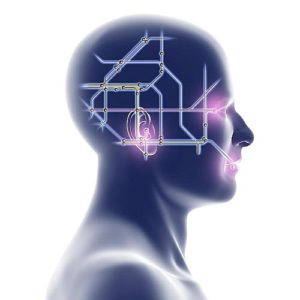Download Area
Welcome to the Download Area, where you can access all your downloads and updates. We hope you find what you are looking for.
Welcome to the Download Area, where you can access all your downloads and updates. We hope you find what you are looking for.
Turning technology into enduring customer benefit
Post by Mark Coyle, Chief Strategy Officer @ mark.coyle@utiligroup.com
Everybody is now experiencing the disruption to our society through digital technology as our lives go online. This is changing the way we buy goods and services while creating data about us that can help personalise the experience to our specific requirements. Yet our global energy market design and delivery systems are now three decades old. As energy markets transform to catch-up with the digital era, customer connections via apps, meters and devices provides new insight. For the first time, customer data from a smart meter is accessible with prior consent to identify opportunities to visualise and personalise our service. These changes started with online services then evolved with mobile apps and now smart meters. Over time in-home sensors, connected remote controls and appliances enable providers to optimise customer energy costs. Energy Suppliers and authorised data users will be increasingly able to advise on ways to produce, store and use energy to optimise how much is consumed and its cost.

Are energy customers receptive to engage in the emerging benefits that technology creates?
In earlier decades, energy was an essential service that was comparatively low in price and had very few interruptions. Considerations of sustainability were still a way off and we all had fewer devices connected in the home or work environment. Working for a major company with nearly two thousand employees on site, I remember us having six computers for the whole site and of course no mobile phones. This was almost exactly thirty years ago when even dishwashers, dryers and air conditioning were early in their UK adoption. That time also saw the design of a new UK competitive energy market, as was the case in many countries around the world. The world of work and home was undoubtedly slower, with communication by letter or home phone rather than instant messaging across dynamic social media platforms. The UK energy market opened in 1990 to large industrial and commercial customers, then to smaller businesses in 1994 and finally to residential consumers in 1998. Our energy market today was designed in the late 1980’s by an industry that could not envisage our connected society today.
In 1998 as the residential competitive market opened, the internet at home was an emerging technology. Internet services were in their infancy so if installed it was on a slow dial-up basis with one line connected by wire to a desktop computer. There was no wi-fi and very few websites, meaning there was very little to do on the internet with only rudimentary text based messaging and amateur websites. Price comparison meant seeing a sales man who came into the house or in a city centre. The idea of competitive markets for services such as energy, banks, phone, insurance, TV was completely new. There had been no choice for many services and customers were loyal across decades to their insurer or bank.
Existing people from the nationalised industry designed the way in which energy was and is still charged for. These incumbents expected only to compete with each other in the newly created regional Supply companies. In the new competitive market, tariffs were usually for two to five years with little difference. Price rises seemed to follow one another across competitors distrust and inertia. Customers worried more about risk of price rises or lights going off than they did best price or choice. At first competition was symmetrical, players had the same founding at privatisation, formed before the digital age, only competing with each other.
Over time from not thinking about electricity and gas at all, customers experienced rises that mean the bill more than doubled between 2004-2007. There was also more choice emerging from 2008, led by our pioneer customers, the new players such as Ovo and First Utility joining original entrants Good Energy and Ecotricity (all of whom we are still proud to call our customers). A large proportion of the early market were already consumers who as mature adults had only experienced the traditional, long-standing approach and never engaged in the market. Those are now senior citizens, of which many will not engage in the markets at this stage of their lives. This is where the price cap comes in, to protect the interests of those loyal customers who either cannot or do not engage in the market.

Competitive energy markets were designed thirty years ago before the digital age
If we fast-forward to our internet-based society, we will soon see smart meters deployed for everyone that wants one with associated innovation in tariffs. We have all connected many more devices over recent years, for example I had twenty one connected on Sunday afternoon at home. It is now the default position that a new device can and should have embedded wi-fi connectivity. As we have increased the number of devices using electricity in our homes, there has been a quiet revolution in appliance energy efficiency. Major electricity consuming devices such as washing machines, dishwashers, dryers and TVs are all far more energy efficient, meaning that our total energy requirement has not grown in line with the number of devices plugged in. This has hidden a large potential rise in our energy bills that has instead been driven by the commodity cost, energy delivery network investment, social and sustainability programmes.
We now have genuine competition in the UK market, across dozens of participants but the amount in the customer bill actually controlled by the retail is only around 20% at the most. It is impressive that large energy cost savings are possible by switching with so little cost under the direct control of the Supplier. With competition, tariffs changed to a default one-year basis with some variations and two-year deals. However, most engaged customers understand the risk of standard prices drifting upwards through their not making an informed choice.
Although energy gets a lot of attention the same drift upwards in price when on a default tariff is also true in insurance, broadband, TV and other key services. However, we all feel more control over whether we want those services at all, whereas energy is truly essential. Similarly, bill payments transitioned from a quarterly basis paid by cheque to a monthly bank based payment for most. This gives greater visibility of cost, a high winter bill might drive some efficiency, investment or switching as is observed with winter switching peaks when energy costs us all most. For those on Prepayment and Pay-As-You-Go energy, attention to energy cost is every day, often with a deep understanding of usage at appliance level to help keep bills low.

Society is more engaged in energy as it becomes smarter & more flexible through technology
The UK government has a planned forward roadmap of industry change following smart meters. This programme encompassed faster customer switching and more accurate settlement of electricity industry costs using smart meter half-hourly consumption data. The adopted Ofgem proposals for switching are next day for residential customers and three days for business. This concept of better customer data, enabling personalised tariffs, in a home with devices that are more flexible when they operate, with an ability to move supplier and close the bill quickly opens up a completely new basis of competition. If that was a lot to read in one sentence, I apologise, but that is because the government in UK is ambitious in introducing a lot of change all at once over the next few years. It is driving this sector change in anticipation of ‘energy flexibility’ integrated into smarter grids, energy storage and electric vehicles. The system and market can then adapt dynamically to changing circumstances with customers, their chosen service providers and energy networks supporting each other collaboratively.
It will soon be possible to offer a tariff in the working week for the weekend, switch the customer ahead of the weekend, deliver the energy, settle it on the Monday and the customer then either re-fixes or moves on again. Customers may not want to engage that frequently, but if made easy or even automatic, then they have a new ability to drive the best cost point continually. Other services will seek to aggregate the experience for customers to remove any new complexity. There are already embryonic innovations for occasional free weekends or a package of energy at fixed price, but they come within a wider, longer Supply relationship. For most customers seeking fair pricing and good service from a Supplier they trust, these innovative concepts have perhaps not yet evolved past interesting novelties.

Energy customers will potentially have multiple Suppliers & cost optimising services across locations
A customer may have dozens of tariffs across the year, from multiple Suppliers, sometimes with more than one Supplier at a time, with the customer perhaps moving provider many times. The energy relationship may extend beyond the home, to charge mobile cars and devices on the go. Additionally an energy account may transition from being for one home or business, to be about people affiliated with each other. Perhaps I could have an energy account that pays for the energy requirement of my children at university or in their first premise, or like Uber paying for their car’s electricity.
Maybe I could manage the energy of my parents with their consent or on behalf of an interest group. This could be a club, church, charity or collective energy-sharing scheme. In a world where work and home blur together, being able to manage combined home and small business energy is a requirement not yet met by energy Suppliers easily. Tariffs may in future even be for different rates for different times of day, by device, by location. Elexon, the Balancing & Settlement Code authority for electricity has just issued a paper envisaging a customer potentially having more than one energy Supplier. Ahead of customer demand for this innovation, the industry bodies are attempting to go from catch-up to anticipate the changes. The possibilities are staggering but the resulting complexity may be less welcome by customers.
Once smart meters are installed, the new role of DCC ‘Other User’ enables authorised entities to have customer data access with prior consent to see how they could deliver benefit. This may be via a tariff, new appliances, energy saving measures, collective switching, energy sharing and many more applications that are yet to emerge. This opens up vast possibility that has real customer sensitivity around data access and security. The UK government is committed to this concept across sectors though with open data in banking in active delivery at the time of writing. Engaging the customer to gain and keep consent will be vital. For those existing and new organisations exploring the DCC ‘Other User’ role, we welcome your contact.

Secure customer data access with prior consent is the vital enabler to identify cost savings continually
As digital start-ups create new ideas continually, the innovation comes ahead of the customer need and adoption. Some concepts fall by the wayside while others flourish and become the new normal. There is no doubt that innovation is possible with evolved account structures, mobile relationships, app engagement, smarter tariffs and payment methods. The real consideration is whether consumers are ready at scale to engage in them and if not, how to unlock this. For a while gamification was a big concept, to introduce playful competition into smarter energy. Nudge programmes were also tried so that we all make small adjustments as have community engagement platforms to share learnings. These all have their place but do not deal with a core problem, which is this: most of us just want to pay a reasonable price and be left alone to live our lives.
We pay more for our homes, car, TV and mobile data/streaming often than we do for our energy. If we can afford it, we engage less and those who are less able are not often the target of technology innovators. It is a reality check for everyone innovating in the energy sector using technology. Sometimes the fast-paced constant change and new terms such as ‘neural grid’ or ‘peer to peer’ energy can switch off more people than it can engage. Energy is essential; it is a basic human need for our society to function. Our experience of it is largely without outage or problem, it is as good as it is ever going to get. Almost invisibly, our society has extended where it is available including it being free on the go for small uses.
The next competitive frontier is not endless technology innovation, there is so much already in formation that it will take decades to deliver. The challenge for us all in energy is to deliver end user benefit simply in a way that is trusted and adopted at scale. Customers need time to adopt to the new models, work out what it means for them and experience the beneficial outcomes. If new technology comes forward continually as ‘the next thing’ before each is adopted, it may create user confusion or resistance. Technology innovation is fun at the start but hard to deliver at scale. To achieve delivery success, putting the energy user needs at the heart of the proposition is vital. The first part of our internet age viewed connected technology with optimism but recent data sharing scandals have added a more unsettling aspect for people. Each of us is now asking who the technology benefits, how can I control it and who has what data about me?

Customers need trust with service providers to engage in new ways they can benefit over time
Smart metering is only the start of the energy technology race, especially for customers who typically spend less than half an hour a year dealing with their energy. However, it is a shift to digital energy and dynamic competition. Everyone will need to be engaged in a way that facilitates their participation, so that everybody benefits not just the digital natives. Reaching all corners of our society is phenomenally hard, but we cannot have customers left behind. We need to break down the possible into propositions that build organically, integrate together and fit intuitively with our stages of life.
Each innovation has to integrate together into a single journey of change that the customer comprehends across all the value contributors. Suppliers, technology providers and home device platforms need to find new ways of operating together in a single environment that includes energy network companies. These will be new service based relationships that include and go beyond the role of energy ‘Supplier’ or ‘Retailer’ as understood today. Ofgem and potentially Elexon has created a Supply Licence ‘Sandbox’ model to trial new concepts before they go live into mass delivery. Ofgem is also reviewing suitability of the ‘Supplier Hub’ model as many new technology and service innovators seek to go beyond needing to be a Supplier at all and instead create a direct customer relationship that endures. How Suppliers and new service providers collaborate or compete is an area that is only now starting to emerge.
Turning the possible into the viable and the adopted is pivotal to create propositions that succeed in the competitive market. Suppliers and new service providers are in a race to gain customer trust as a mandate for further engagement. They can then be their aggregate energy service provider to optimise all the sources and uses of energy at best overall cost or income. The very nature of what a Supplier means is up for renewal in the digital age, competition is not just with each other but to become the next type of service provider that is only now becoming discussed. Automation may introduce further simplification for customers but needs enhanced trust by the customer in giving the operation of their energy to a third party service. As envisaged earlier there might be a range of temporary subsidiary services and Supply relationships underneath with the aggregator being the one that keeps the relationship. We will not measure the market by switching levels at that point but around long term earned retention and cumulative benefit.

Make the customer experience simple so they understand & engage to receive the most benefit
At Utiligroup, we are working with energy Suppliers, their service providers and new innovators to deliver real customer benefit today. This is the start of a journey towards that next basis of energy we call energy2.0. We are supporting over seven million meter points for customers who made an informed choice of Supplier and are therefore receptive to further engagement. Our high-scale service architecture underpins competitive energy leaders from their first trials through to mainstream benefits for millions of customers.
We are engaged deeply across the industry change programmes mentioned such as DCC smart metering, faster switching, Supplier Hub review, innovation sandboxes, half hourly settlement and the government’s energy flexibility roadmap. All these changes will integrate and converge to create an adaptive, flexible energy market to benefit all users. Through Utiligroup turning the overlapping change programmes into integrated operational best practice, our customers can further their competitive leadership. Utiligroup, our customers and their industry meter agents collaborate to deliver customer best practice today. This customer best practice is a basis for engagement to create new benefits over time that commence with smart metering. Turning vast technology possibility into easy to understand, interoperable customer benefit is the next mission for us all.
We underpin those who empower customers to make informed energy choices so that they can thrive in our digital age. Smart is only the start…
Mark will be participating in the ESG Technology panel at DNV GL Energy Executive Forum, 15-18 May in Miami, USA. We welcome customers and new competitive innovators meeting us there.
Mark engages extensively with competitive energy leaders globally to drive new insight and apply this to the platform enablement by Utiligroup and the wider ESG.

Read our other Smarter Energy Insights and connect with Mark at LinkedIn
Mark’s energy market insight feed is at https://www.twitter.com/markcoyleuk
Email today to explore next generation energy supply via mark.coyle@utiligroup.com
| Release version | Release Date | Version details |
|---|